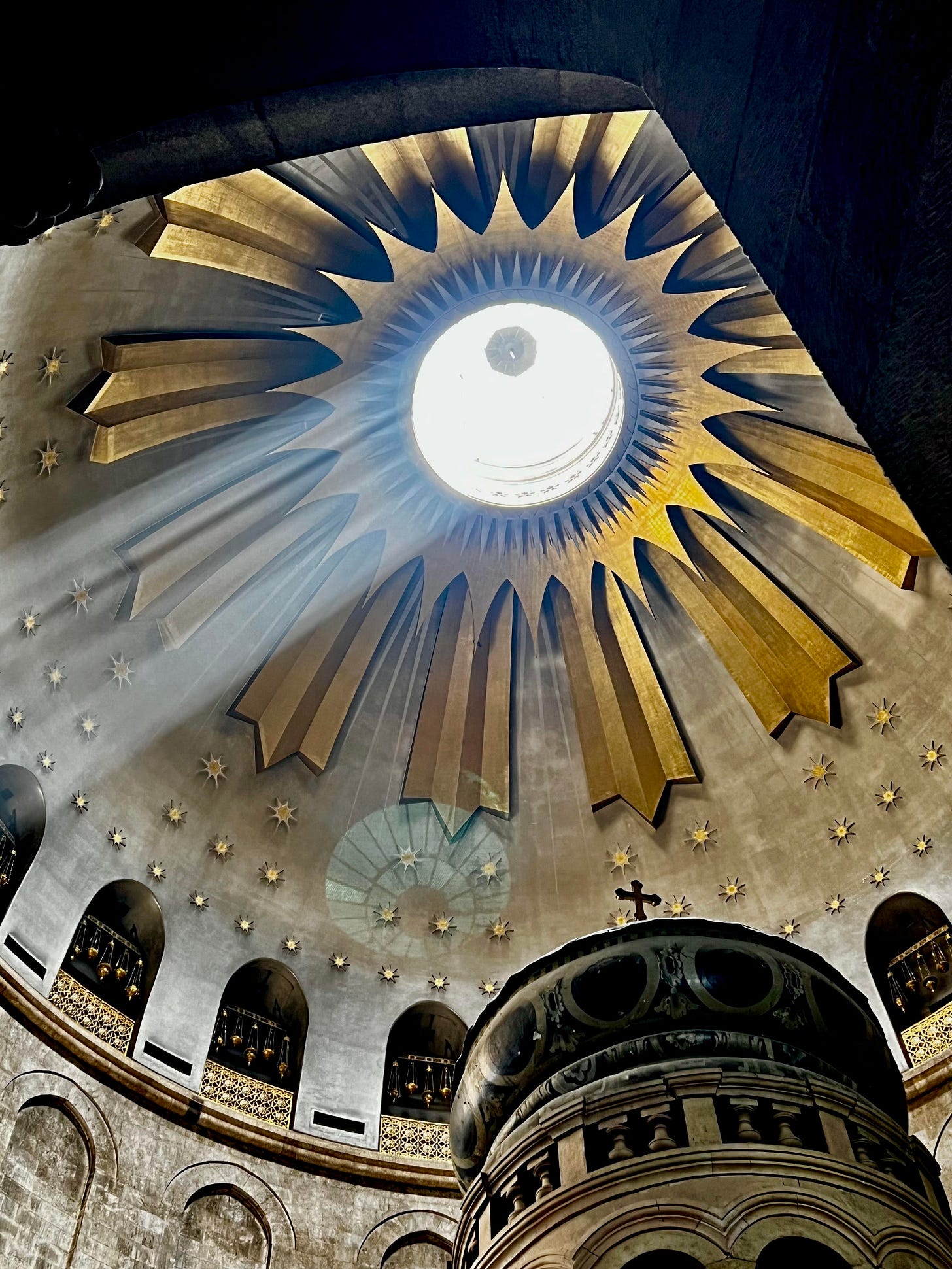A Wednesday Story: On Holy Remembering
A pilgrim explores Israel and Palestine for the first, returns home to Eastertide in a grieving Nashville, and recalls "God with us" while hiking the Blue Ridge Mountains, contemplating holy lands.

One of the greatest blessings of community is being able to share the load.
So, this week, as your regular correspondent ( :: weak wave, cough :: Hi …



